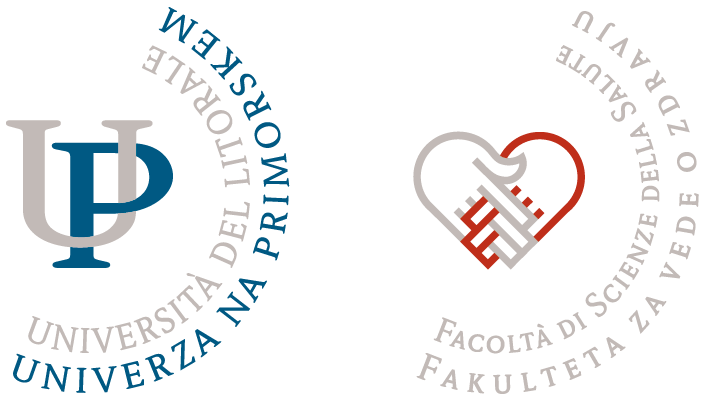Content
- Lectures: 60 hours
- Exercises 10 hours
- Independent work: 50 hours
Subject carrier
Description
GERONTOLOGICAL NURSING
1. Introduction to gerontological nursing
a. Aging throughout history in the world and in Slovenia;
b. Gerontology – definition of the concept of gerontology and narrower fields
2. Population aging
a. Definition of the terms age and aging and age groups of the population;
b. Characteristics of age periods
c. The phenomenon of population aging, demographic characteristics
3. Aging theories
a. Biological theories of aging
b. Sociological theories of aging
c. Psychological theories of aging
d. Theories of aging in gerontological nursing
4. Common physiological age changes – aging of organ systems:
Cardiovascular system, respiratory system, gastrointestinal system, genitourinary system, reproductive system, neurological system, musculoskeletal system, sensory system, integumentary system, immune system, hematopoietic system
5. Gerontological nursing
a. Basic elements of gerontological nursing (evidence-based nursing, standards, competencies, principles
b. The role of the nurse in gerontological nursing
6. Comprehensive gerontological care and planning of nursing needs
a. Comprehensive assessment of functional ability (daily life activities, instrumental and advanced life activities)
b. Physical oceans of circulatory, respiratory, gastrointestinal, sensory, urogenital tract, neurological, musculoskeletal, skin, …
c. Cognitive assessment (assessment of attention, memory,…)
d. Psychological assessment (quality of life, presence of depression,…)
e. Assessment of spirituality
f. Assessment of social functionality
g. Individual care plan
7. Health promotion and disease prevention – identification and prevention of common risk factors in older adults:
a. physical activity, nutrition, vices (smoking, risky drinking), safety, polypharmacy, immunization, mental health screening tests, violence and neglect of older adults,
b. Common chronic diseases and problems in older adults (cardiovascular diseases, stroke, osteoporosis, malignant diseases, …), vision, hearing, dementia, frailty…
c. Nursing care of older adults according to the work process method (planning of nursing care activities, evaluation and documentation)
8. Ways and characteristics of communication with older adults
a. Therapeutic communication
b. Communication strategies with older adults with hearing, vision, neurological and cognitive impairments
9. Treatment of an older adult with dementia and other mental disorders (depression, delirium)
10. Ensuring the safety and autonomy of older adults
11. Use of medicines in old age
12. Ethical aspects in gerontological nursing
13. Palliative care of older adults and identification of the needs of the dying and support for their relatives
14. Legislative Rights of Older Adults
15. Forms of care for older adults in Slovenia
16. Categorization of nursing care and care of older adults (assessment of self-care level of older adults).
17. Long-term care – assessment of the long-term care needs of older adults
18. Active aging
19. Use of assistive technology to promote quality of life for older adults
REHABILITATION
I. Basic part:
1. Subspecialties of physiotherapy / physiotherapy / rehabilitation
2. Locomotor physiotherapy
3. Respiratory physiotherapy
4. Rehabilitation and biomedical engineering
5. Cardiovascular physiotherapy – internal physiotherapy (physiotherapy of civilization diseases)
6. Manual therapy and physiotherapy of functional movement disorders
7. Neurophysiotherapy
8. Somatopsychotherapy
9. Outpatient physiotherapy
10. Palliative physiotherapy
11. Sports physiotherapy
12. Physiotherapy of sexuality
II. Preparation on clinical part
1. Massage, lymphatic drainage
2. Pressotherapy, cryotherapy, hydrotherapy
3. Electrotherapy, magnetotherapy, laser, ultrasound and other techniques
4. Biomechanics, kinanthropology, health physical education, safety at work, ergonomics with ergology
5. Techniques from cardiorespiratory physiotherapy, neurophysiotherapy, ophthalmic physiotherapy, sports physiotherapy, manual therapy techniques, gynecological physiotherapy, palliative physiotherapy, gerontological physiotherapy treatment and other sub-disciplines
Rehabilitation in gerontology
1. Biology and physiology of aging
2. Osteoporosis and fractures
3. Rehabilitation after amputations
4. Rehabilitation of patients with degenerative rheumatism
5. Rehabilitation of patients after stroke
6. Developmental and scientific research trends in physiotherapy
7. Complementary techniques in physiotherapy
8. Robotics and orthotics with prosthetics
9. Slovenian physiotherapy
10. Physical exercise for health

